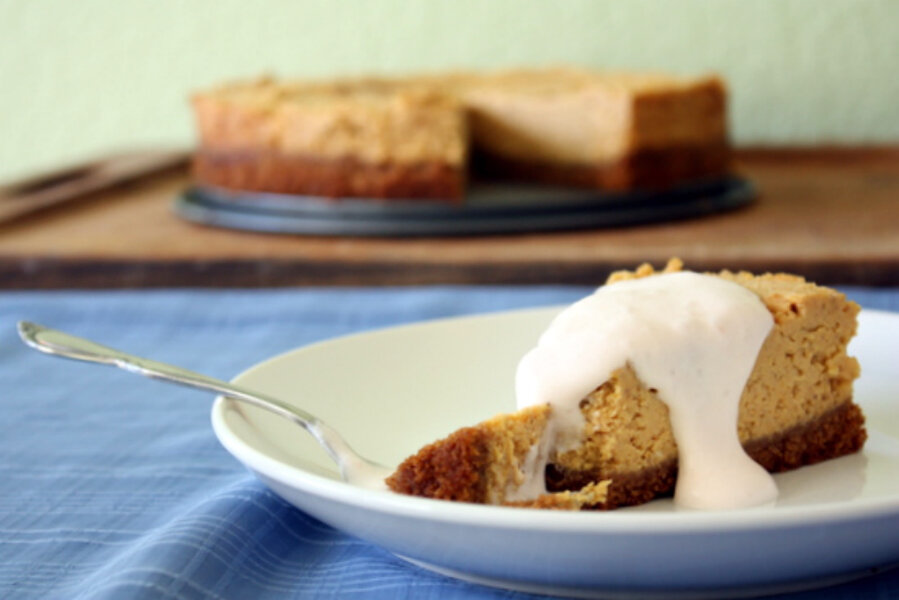Crust:
9 whole graham crackers (about 4 ounces), broken
1/4 cup sugar
1 teaspoon ground cinnamon
1/4 cup (1/2 stick) butter, melted
Filling:
4 8-ounce packages cream cheese, room temperature
1-1/2 cups sugar
3 large eggs, room temperature
1 15-ounce can pure pumpkin
1 cup whipping cream
2 teaspoons vanilla extract
2 teaspoons ground cinnamon
1 teaspoon ground ginger
1 teaspoon ground nutmeg
1/2 teaspoon ground allspice
1/2 teaspoon ground cloves
1. Preheat your oven to 350 degrees F. Wrap the outside of your spring-form pan in two layers of aluminum foil.
2. In a food processor, combine graham crackers, sugar, and ground cinnamon until finely ground. Add melted butter and pulse until incorporated. Press the mixture evenly into the bottom of the pan, not going up the sides. Bake the crust for 10 minutes, until golden brown.
3. In a large bowl, use a hand mixer to combine cream cheese and sugar until completely smooth. Scrape down the sides frequently. When you think it is smooth, continue a few more minutes and make sure. Add eggs, one at a time, mixing until fully incorporated. Add pumpkin, cream, vanilla, and all spices. Mix until smooth. Pour into the pan with the baked crust, and bake for 70-90 minutes – until the top is puffed and golden, but the center of the cake should still jiggle slightly when shaken. Turn off the oven and leave the cheesecake in for another 15 minutes.
3. Remove cheesecake from the oven, and let sit at room temperature until cooled. Cover and refrigerate overnight before serving. When serving, run a butter knife around the edge of the pan to loosen the cake before removing the outer pan. Use a sharp knife dipped in hot water (and shaken dry, not toweled off) to slice monstrous pieces.
Notes and Tips:
Use room temperature ingredients! Seriously, it will make everything better.
In the initial mixing of the sugar and cream cheese, mix longer than you ever imagined necessary. It will seem smooth, then get smoother, and smoother: keep going. Scrape the sides of the bowl with a rubber spatula to ensure everything is getting mixed, and mix until you see absolutely no clumps and it is the most beautiful smooth sea of cream cheese you’ve ever seen.
Use a water bath! I’m a huge proponent of water baths for cheesecakes: find a dish big enough to fit your spring-form pan into, and fill it with about an inch of boiling water when you start baking the cheesecake. This will regulate the temperature better and humidify your oven to ensure a more uniform baking, as well as prevent cracks from forming in the top of the cheesecake.
Let this cheesecake sit overnight. Let any cheesecake sit overnight: it will taste SO MUCH BETTER in the morning! I’m not kidding – just do it.
To clarify the cutting technique, have a bowl of hot water next to you as you cut the cheesecake. Before each cut, dip your knife into the hot water and then flick off any extra water, but do not dry it with a towel: it will only make it significantly more difficult to cut.
Read the full post on Stir It Up!








